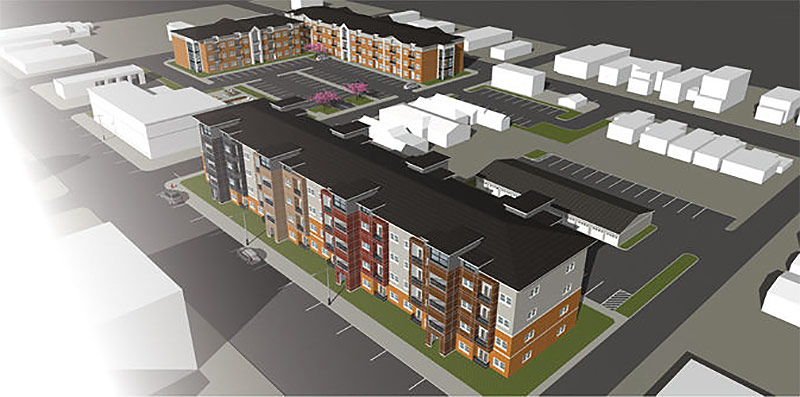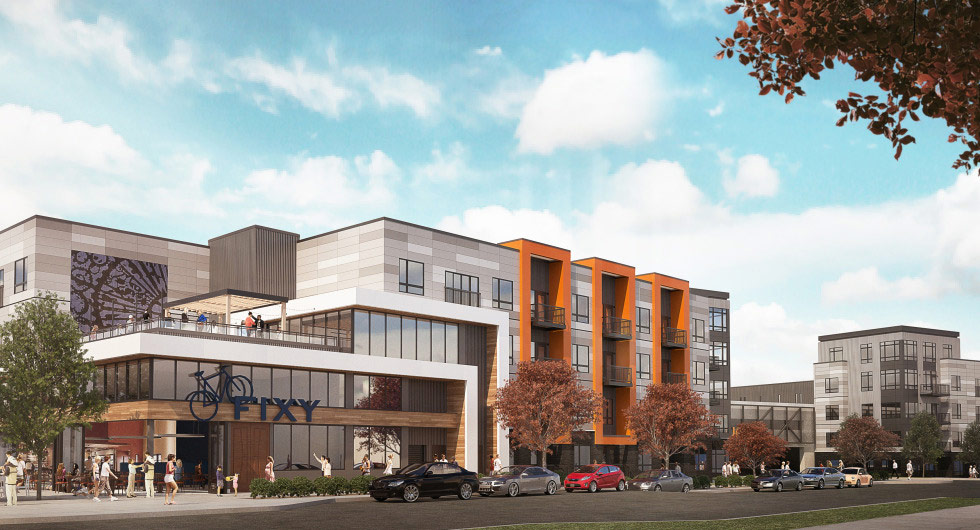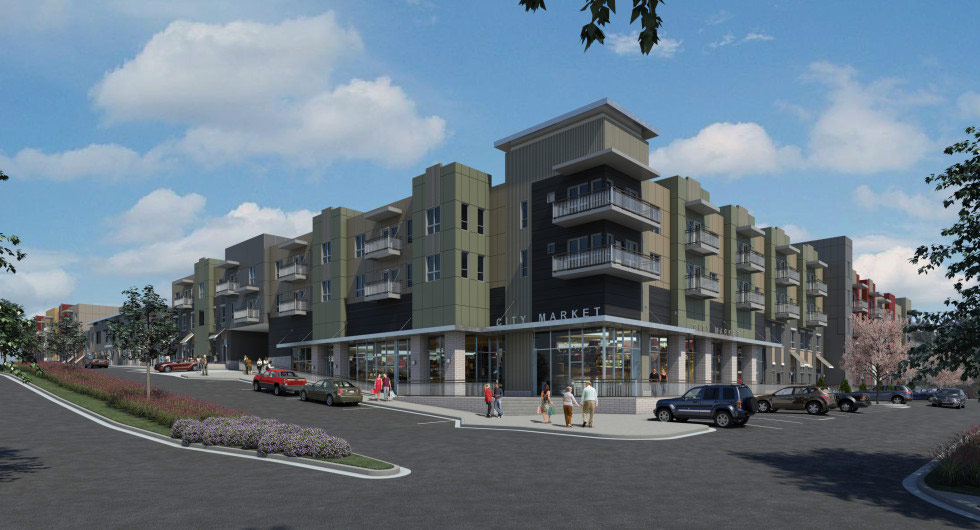New Albany is looking to get into the downtown development game. The Southern Indiana city recently announced that it would seek incentives to help an Indianapolis-based developer built a $16 million, 157-unit apartment building on the former Coyle Chevrolet dealership at East Spring Street and East Fifth Street.
Tuesday, the New Albany Redevelopment Commission resolved to add a portion of the development site into the city’s Tax-Increment Financing (TIF) district, according to the News & Tribune. The developer would use funds generated by the TIF district to offset construction bonds. A $3.3 million state tax credit would also go toward the development. New Albany officials also said they funded an economic impact study for the development using Urban Enterprise Zone funds. According to the newspaper, “The study estimated the development could have a $30 million impact on the city within five years of completion. The study assumed the city would have a $1.7 million investment in the project to be paid back through TIF funds over 20 years.”

Flaherty & Collins Properties proposes to build a new five-story structure, a three-story building, and renovate the historic two-story Coyle building as part of the development. The new structures, an L-shaped building at East Third Street and East Elm Street and an I-shaped one directly east of the Coyle Building on Spring Street, would house the apartments. The Coyle building would be converted into retail and office space. Additional amenities include a pool, a dog park for residents, and an outdoor kitchen. Newly released renderings also show a large amount of parking surrounding the complex, including several frontages onto the surrounding streets. No retail is planned in the new buildings, an unfortunate move given the site’s urban context.
While a glance at the developer’s portfolio shows that the company likely got its start in suburban apartment complexes, the company has clearly moved into the realm of urban development. New projects around the Midwest show a range of scales. The Axis at Indianapolis and 2700 University in St. Paul are grander than what’s proposed here, but show the company’s large-scale ambitions. Likewise, the Union in Kansas City is much larger, but includes branding geared towards cyclists and a “bicycle bar,” which shows the developer is willing to take risks. Based on building massing in the renderings, New Albany’s project is perhaps closer to The Heights, planned in a suburb of Kansas City, but the current renderings make it hard to tell.
The initial announcement of the New Albany project appears to have been rushed, with no renderings appearing at first. These new, hastily put together renderings do not appear typical of the developer’s other projects which are rendered in much higher detail, and we hope to see more information soon so get a better idea of the quality of the project. The current views show a first floor of brick surrounding much of the project with what looks like painted Hardy panels above.
“It’s all about attracting a population that will come to New Albany, that will spend their time and resources in New Albany and who appreciate a great place to live,” New Albany Mayor Jeff Gahan told the News & Tribune when the project was first announced. “These are the kinds of developments that cities all over the state and country are fighting for.”

The project still has skeptics, especially over its use of TIF funds. The New Albanian blog has called for increased transparency on the TIF district and subsidies to the project. Overall, the city and state could end up contributing some $5.3 million to the $16 million project. City Council President Pat McLaughlin told the News & Tribune that “tying up TIF funds isn’t something city officials favor,” but he ultimately supported the plan for bringing new residents downtown.
A number of hurdles remain for the apartment complex, including going before the New Albany planning commission and city council for rezoning, gaining final approval for the TIF bond from the city council and redevelopment commission, and getting final approval from the state for its tax credits, which should happen on March 12. City officials expect the project to be under construction by the end of the year.








The sameness of all these spapartment generic apart-chitecture buildings concerns me for the future….. The materials age quickly….. Kudos for incorporating the existing structure. How hard was that?!
I just wish the new craze of what I fear will resemble subsidized housing in ten years was a little more exciting and less formula. I also wish the target audience was more diverse with micro units a possibility! And retail …… Creating sidewalk dead zones isn’t optimal ……
A disappointing proposal to say the least. I’d hope that my hometown would do better to grow it’s tax base instead of subsidizing developements. New Albany has such great potential, I hope that those in the city Government allow it to regrow in a way that allows it to be successful instead of taking the seemingly easy way out and subsidizing substandard buildings like these.
New Albany has the potential to become an amazing small town with the potential to draw people in from across the region. But to do that it needs to increase it’s walkability and it’s number of small businesses. I’m not sure if this proposal does either.